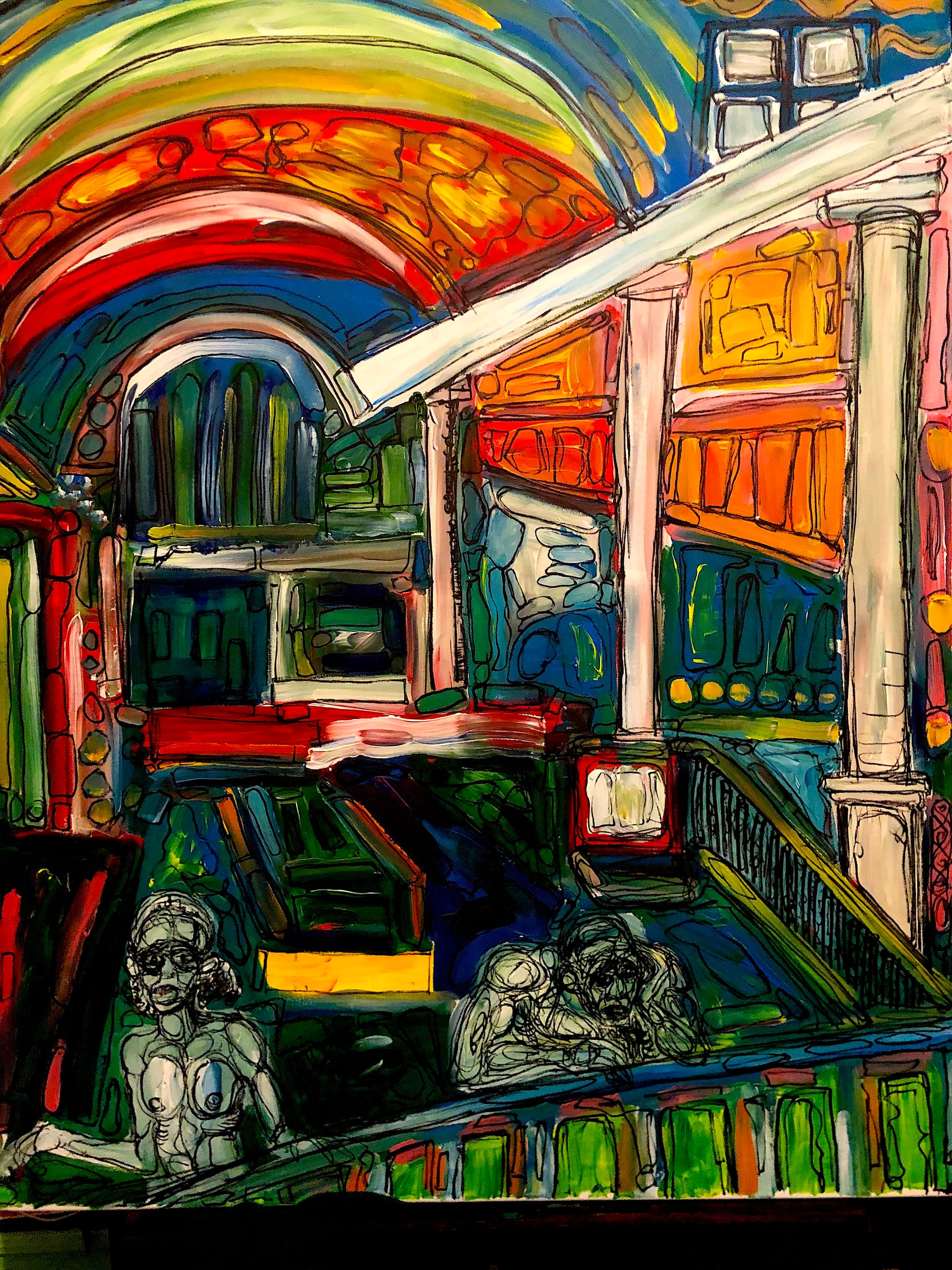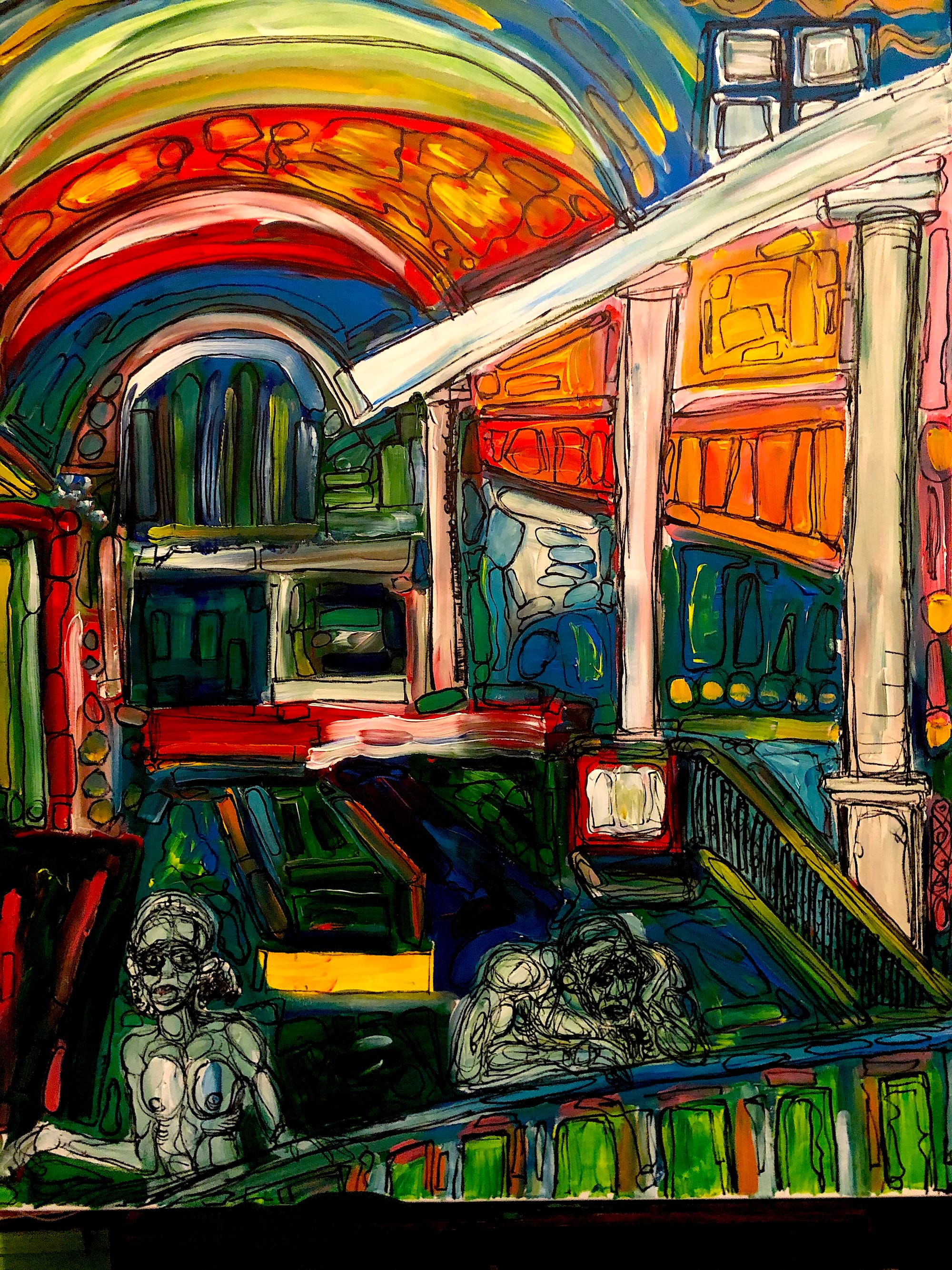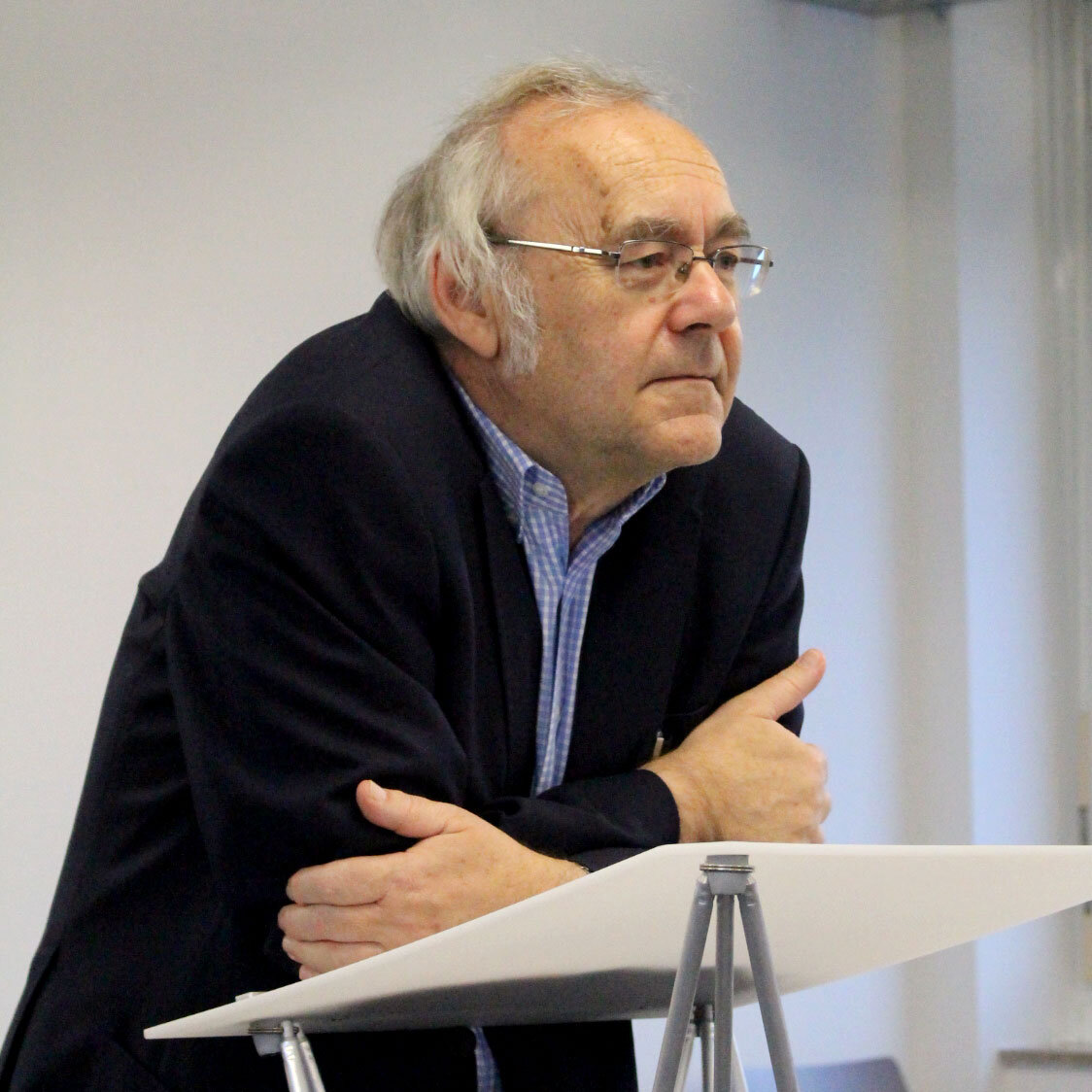The Beyond of Philosophy 10


76. What follows from this? Simply that the object can only be considered to serve as a basis of reference for the descriptions-in-question, if the object has been denoted with the help of exactly these descriptions.
77. In addition referencing the descriptions-in-question to the object is only desirable and makes sense, if one and the same object is presupposed to all (possible) adequate and inadequate descriptions of the object.
The object has to fulfill a priori the adequate-true descriptions.
This one and same object, which is ‘language-distinctly’ presupposed by the Dualizing Mode, is always only known to the extent to which adequate-true descriptions of it are available.
Such an adequate description (at least for the duration of the discourse) is the rudimentary description. It has enabled the first denotation of the object. Over and above this first denotation of the object the ‘language-distinct’ object can only become known as far as the differentiation, which is achieved through the rudimentary description, is superseded by a further going differentiation.
78. A reference to the object is only possible insofar as the object is known. It is therefore not expedient to refer the descriptions-in-question (these are the descriptions from now on ) to the object in that state of denotation in which it was before the descriptions were carried out.
The Dualizing mode of speech presents therefore the language-distinctly presupposed object -- that is the reference-object onto which the descriptions in question are to be referred – through that denotion of the object, which was made possible as a result from the last carried out descriptions in question. (For this purpose of course the descriptions in question must be at least tentatively posited/presupposed as adequate.)
79. The presupposition of the ‘language-distinct’ one and same object for and before the discourse is achieved through a resetting/backsetting (Zurücksetzung) : through a resetting of the object, the denotation of which was enabled through the last carried out descriptions-in-question, ahead/before (more precisely: behind ) these descriptions.
80. This resetting is an apriorization of the object. It is concomitant with the rejection of a basic thesis of Non-dualizing Philosophy: that the object is changed through the description into a ‘new’ object of further description(s).
81. Only through a ‘language-distinctly’ presupposed object can adequacy-truth be determined as an agreement (with something principally different/distinct) and therefore as a goal worth striving for.
82. The object that has only emerged from the descriptions (in question) of the (starting-)object, is now presupposed to exactly these descriptions-in-question as (starting-)object.
The apriorization of the object before the descriptions which have led to it, however, can not reverse or undo the denotation of the object of further descriptions, which took place after and through the descriptions.
83. Of course Dualizing Speech cannot simply duplicate the object: Such a duplication would run counter to its endeavour to establish an agreement/correspondence between the descriptions of the object and the object as a goal of discourse and in addition lead into glaring absurdities.
84. By depriving the object of the descriptions from being changed through the descriptions, it gains an identity separately from the descriptions. The object can now be put ahead of and against/opposite the descriptions.
85. Therewith the decisive step is done: The introduction of a categorical distinction between the object, which is denoted and the denotation of the object. But splitting the object into an object which is denoted and a denotation of the object alone cannot motivate the striving for agreement/correspondence, the pursuit for truth.
86. A non-equivalence between the ‘language-distinct’ object created through this splitting and the denotation cannot sensibly be claimed. Such a claim is not possible without the denotation of the object, which should match the denotation of the object.
This denotation of the ‘language-distinct’ object has already taken place through the postulation of the distinction between the object, that is denoted and the denotation of the object. (A non-equivalence between object and denotation of the object could only be claimed by denoting another object as is denoted through the denotation of the object.)
The secession of the object from the denotation of the object does not lead to a striving for an equivalence/match between object and denotation . Such an equivalence/match has instead to be presupposed as given.
87. Only a further distinction leads to the practice of Dualizing Philosophy. This further distinction is a resulting consequence of the distinction between the object of the denotation and the denotation of the object: the distinction between the object of the descriptions and the descriptions of the object.
88. The setting back ( Zurücksetzung ), the apriorization of the object behind the descriptions leads to a change of the direction of the discourse: The descriptions do not start any longer from the object, but are directed towards the object.
Hereby the Dualizing Mode of Speech overlooks that such a change in the direction of discourse is only possible through denoting the object towards which the descriptions should be directed. And the denotation of the object happens through exactly these descriptions.
Only thus the object is denoted sufficiently differentiated to examine/test the descriptions ‘at’/against the object.
(In the Non-dualizing Mode it is trivial that descriptions cannot be directed towards the object they describe.)
89. The consequences of the introduction of a distinction between the object of the descriptions and the descriptions of the object can hardly be overestimated. A discourse is generally characterised through various diverging/contradicting descriptions of the object of the discourse.The establishment of an (at least relatively neutral) reference basis is achieved through transferring the object of the descriptions-in-question into the Beyond of discourse.
The denotation of the ‘language-distinct’ object of discourse takes place through an apriorizing (Nach vor ne wegnahm e) of the object, which is denoted with the help of that description, which then and therefore can and should be labelled as ‘adequate-true’.
90. If the discourse runs into two contradicting descriptions of the object, the course of the discourse in the Dualizing Mode can be sketched in a simple way in three steps:
Step 1 : O is the object which is described through the contradicting descriptions “A” and “B”.
Step 2 : The description “A” of the object leads to a denotation of the object of further descriptions OA; the description “B” leads to a denotation of the object of further descriptions OB.
Step 3 : OA and OB are reset behind the descriptions “A” and “B”.
If the such created/established object of reference has been determined with the help of description “A” (“B”), the reference of the description “A” (“B”) to OA (OB) results in labelling the description “A” (“B”) as ‘adequate-true’ and the reference of the contradicting description “B” (“A”) to OA (OB) in labelling it as ‘inadequate-false’.
91. An equivalence or non-equivalence between descriptions and the object they describe is only possible in consequence of the denotation of the object with the help of the descriptions. Only then the thus changed/transformed object, the thus changed/transformed neutralistic starting basis can be misused as a reference basis.
This proceeding allows the Dualizing Mode of Speech to eliminate or at least discredit all descriptions (or opinions, sentences, statements, theses, theories) from discourse, which contradict one’s own descriptions (or opinions, sentences, statements, theses, theories).
92. The idea, that the object is from the first so as it is then described, is based on a back-projection, a return-projection (Zurückprojizierung ) of the result of the descriptions onto the starting basis. In order to be able to carry out this projection, the starting basis needs to be transferred into a beyond of discourse.
93. Such an approach/proceeding is the presupposition for Dualizing Philosophy to be able to fulfill its most eminent task: The pursuit of truth and knowledge.
The desired goal can only be achieved, ‘wholly’ or ‘approximately’, if there is an at least relatively neutral arbiter/referee available, which forms the reference basis for diverging descriptions and thus allows them to be weighted. And here it makes no difference, whether the basis of reference is ‘language-independently’ given or if it is, according to a relativistic/constructivist understanding, (at least partially) constituted/constructed through language.
94. The striving for truth and knowledge in the Dualizing Mode can also be determined as the striving for agreement: as the striving for agreement/correspondence with reality, with the objects of the descriptions, or as the striving for agreement/coherence with a given system of statements.
The striving for truth and knowledge is thereby also a striving for non-deviation from the reality, from the objects of the descriptions, from a given system of statements.
95. In the Non-dualizing Mode a striving, a search for truth and knowledge cannot get started: Truth as a desired value is a product of the Dualizing Mode.
When each description forms together with the object of the description a new object of further description(s), then a truth-claim cannot be raised for the description with reference to the object of the description – hence to the object preceding the description, to the description so far.
96. The Dualizing Mode aims at securing the truth of statements. In the Non-dualizing Mode the task is (amongst others) to present this aim as the attempt to secure statements through truth.(The theories of truth are an epistemological cover-up of the law of the fist.)
97. The striving for invariance, truth, standstill, for upholding the status quo, is replaced in the Non-dualizing Mode by a striving for change and alteration.
The ‘pursuit of truth’is superseded by the ‘pursuit of change’.
98. In Non-dualizing Philosophy reality is the ‘last/present state of things’, the positions of discourse arrived at, the descriptions so far that have not (yet) been continued/developed/changed. What reality consists of is determined through the course of the descriptions.
99. In the Dualizing Mode the present/last state of things is transferred into a beyond of discourse. The ‘language-distinct’ reality is the beyond of discourse. The descriptions which correspond, which are adequate to the ‘language-distinct’ reality – and hence describe reality ‘as it is’ – are exactly these descriptions (or repetitions of exactly these descriptions) from whose apriorized result reality is (or has been) formed/constituted.
The appeal to a ‘language-distinct’ world and reality is always made when conflicting opinions arise and are to be decided in favor of one’s own position. Ontologizing this position allows to defend/protect/immunize it against deviating positions.
100. Not only the certainties regarding the knowledge of the world, of the objects, are self-fabricated, as claimed by critical-rationalist and relativistic variants of Dualizing Philosophy, but as well that about what this certainty of knowledge is aimed at.
The objects of knowledge are self-fabricated as well.
The End
Next: "On Interpretation 1"

Josef Mitterer is an Austrian philosopher.
The Beyond of Philosophy 1 here
The Beyond of Philosophy 2 here
The Beyond of Philosophy 3 here
The Beyond of Philosophy 4 here
The Beyond of Philosophy 5 here
The Beyond of Philosophy 6 here
The Beyond of Philosophy 7 here
The Beyond of Philosophy 8 here
The Beyond of Philosophy 9 here